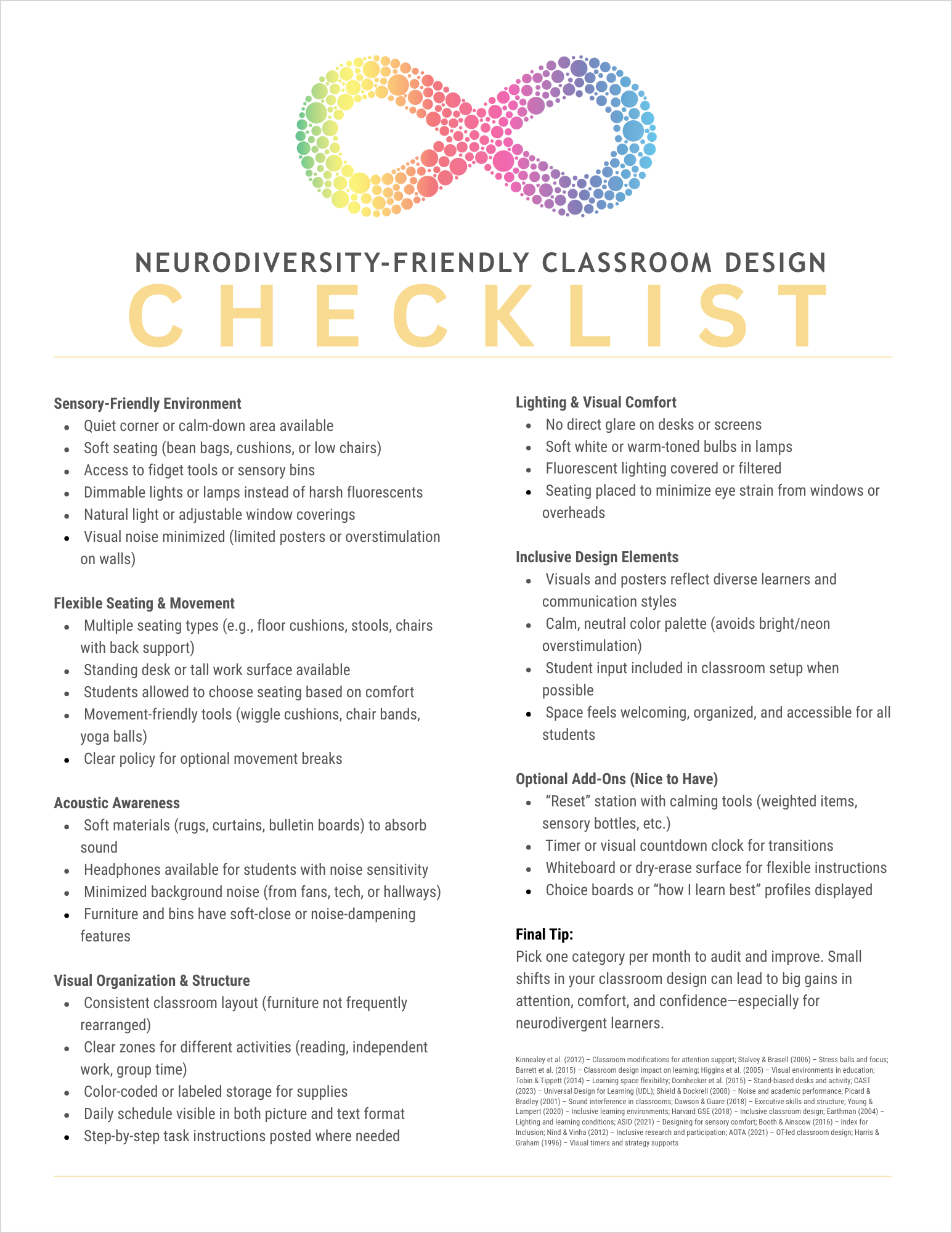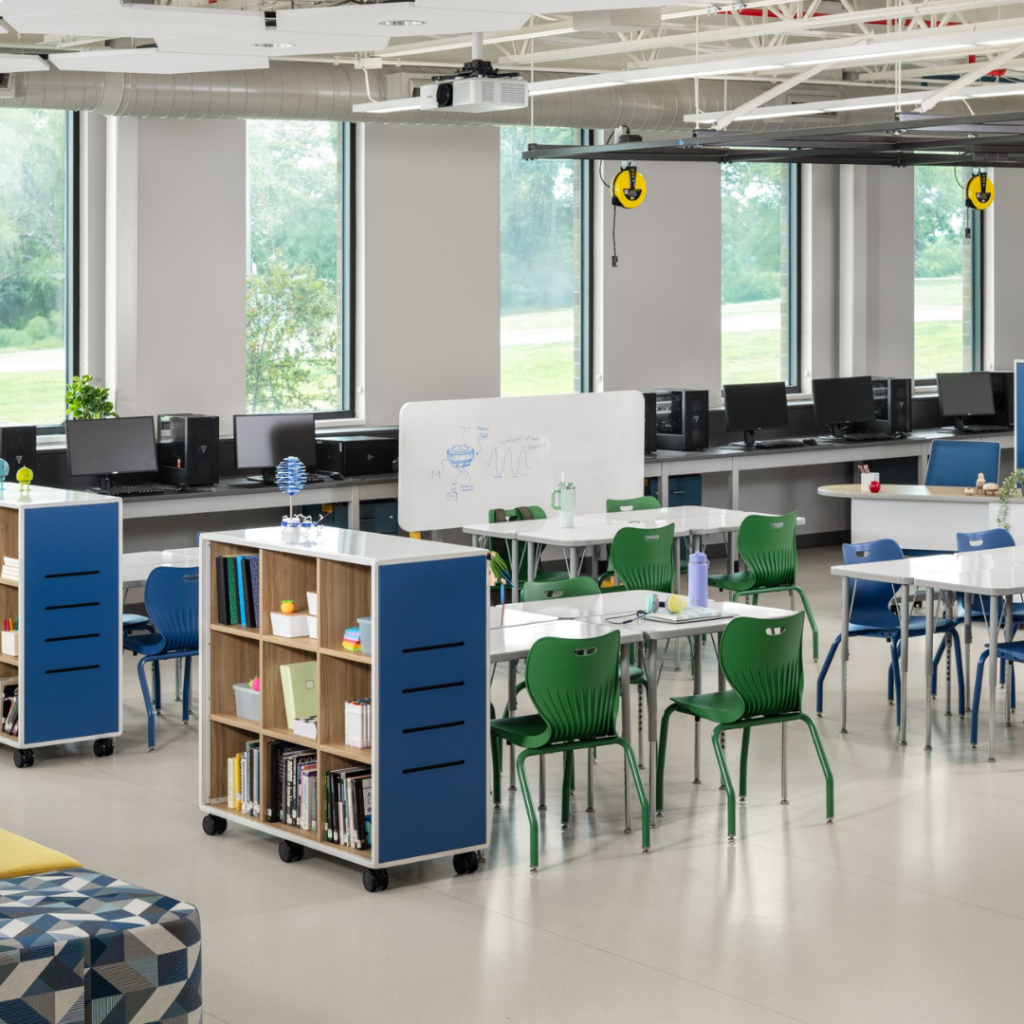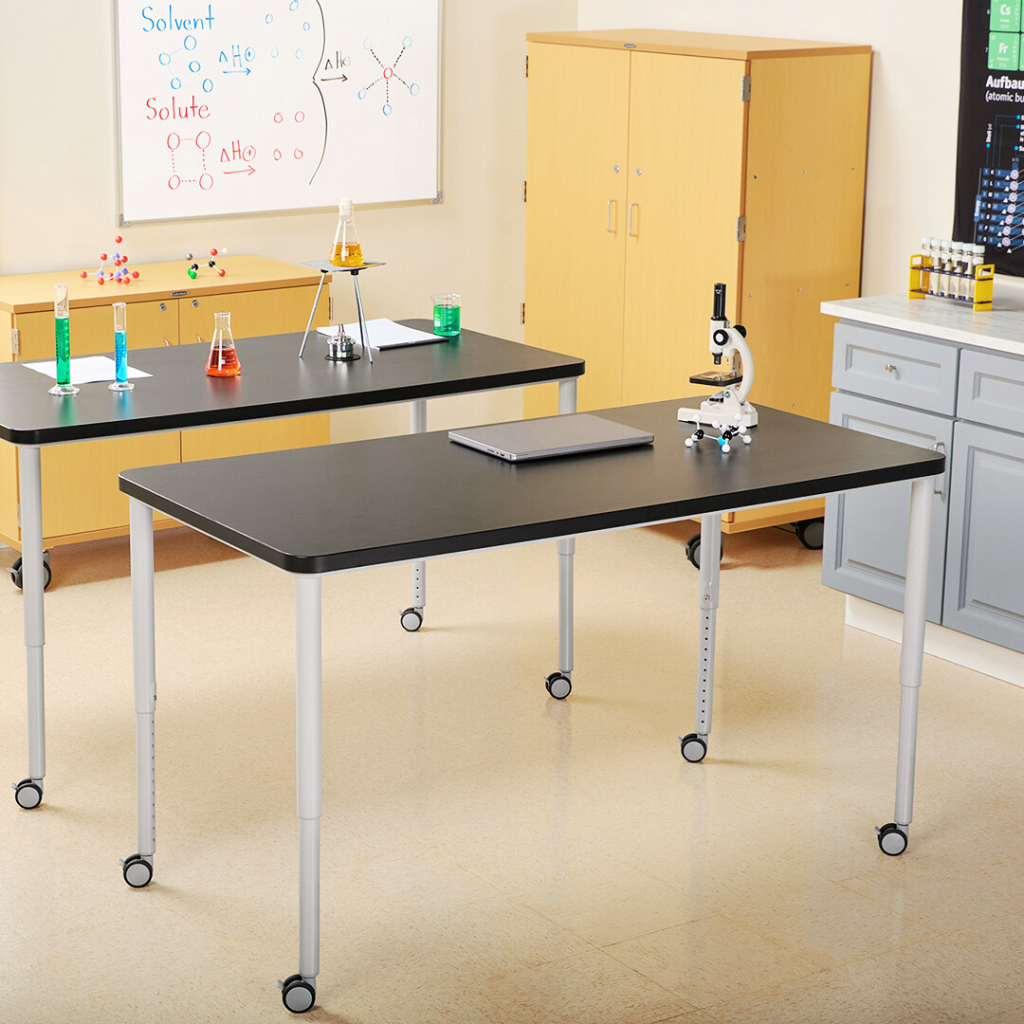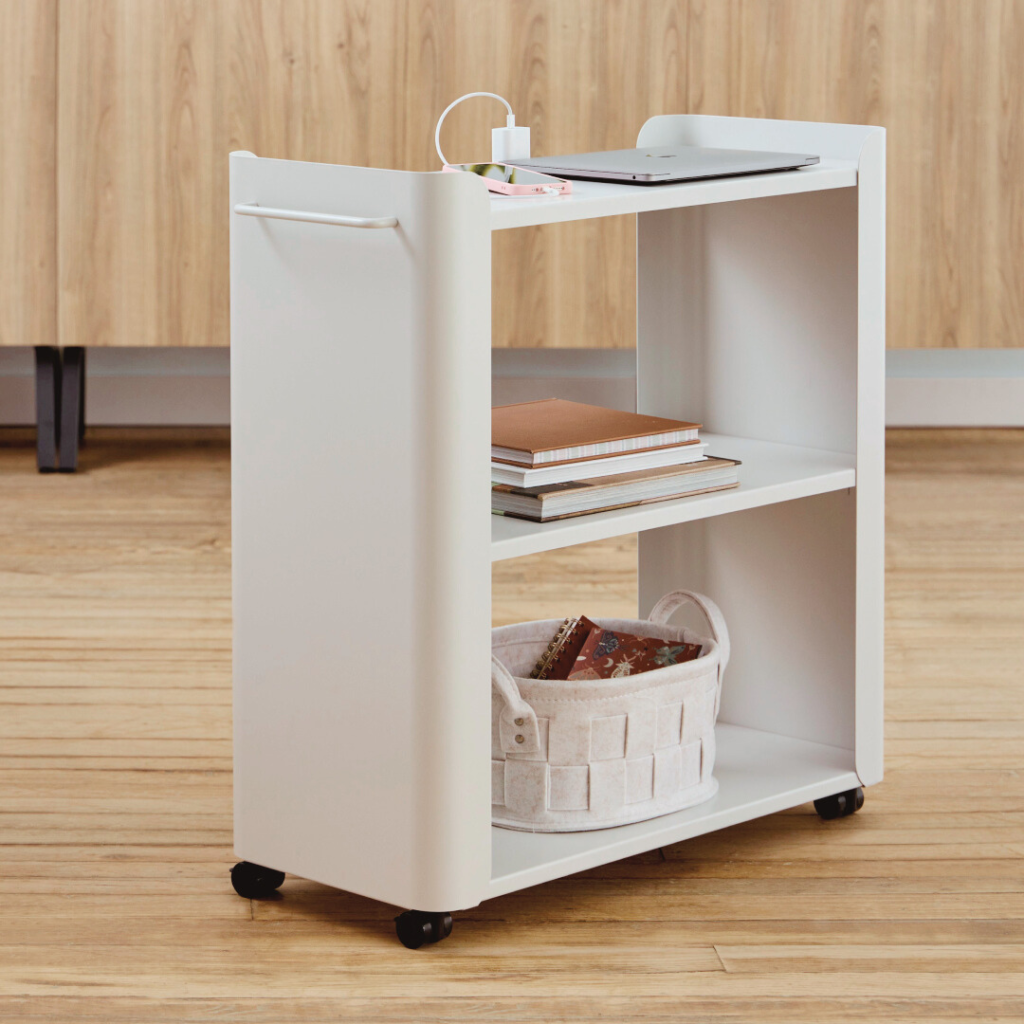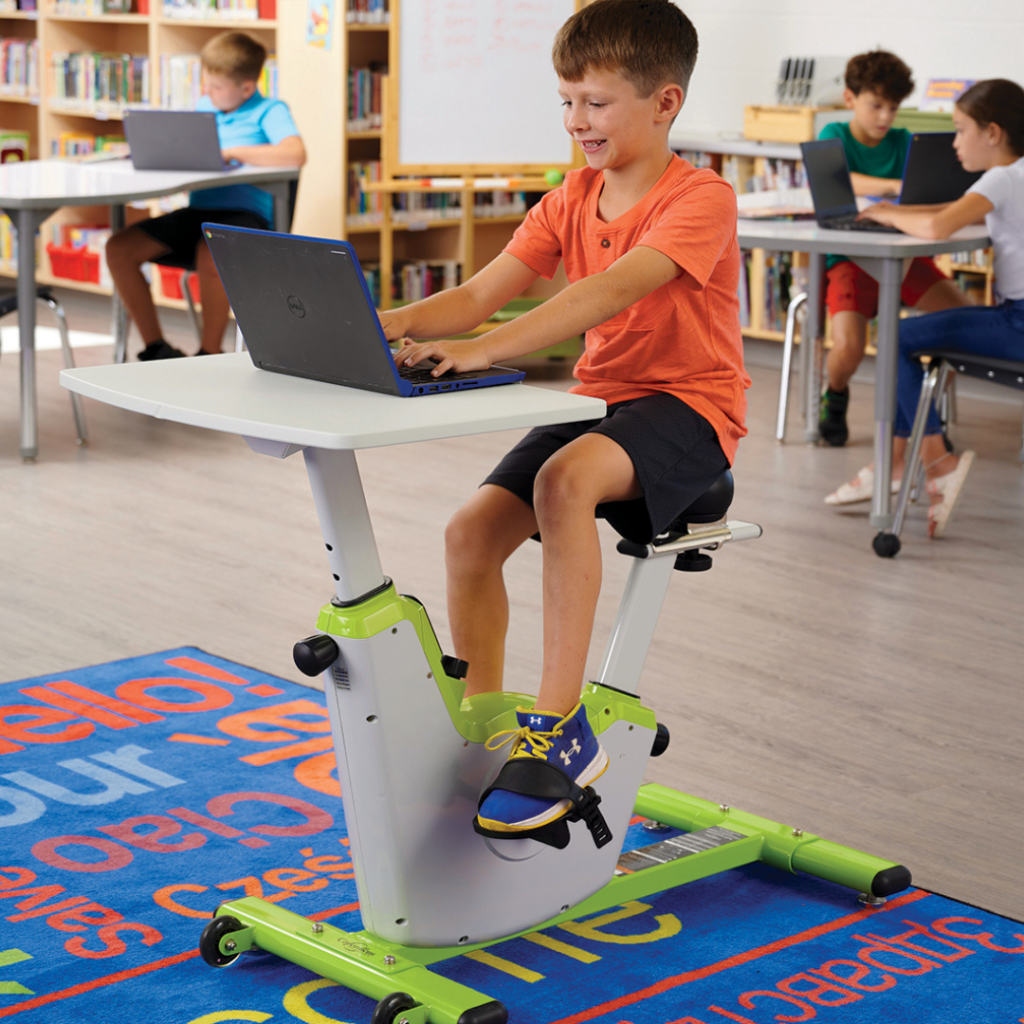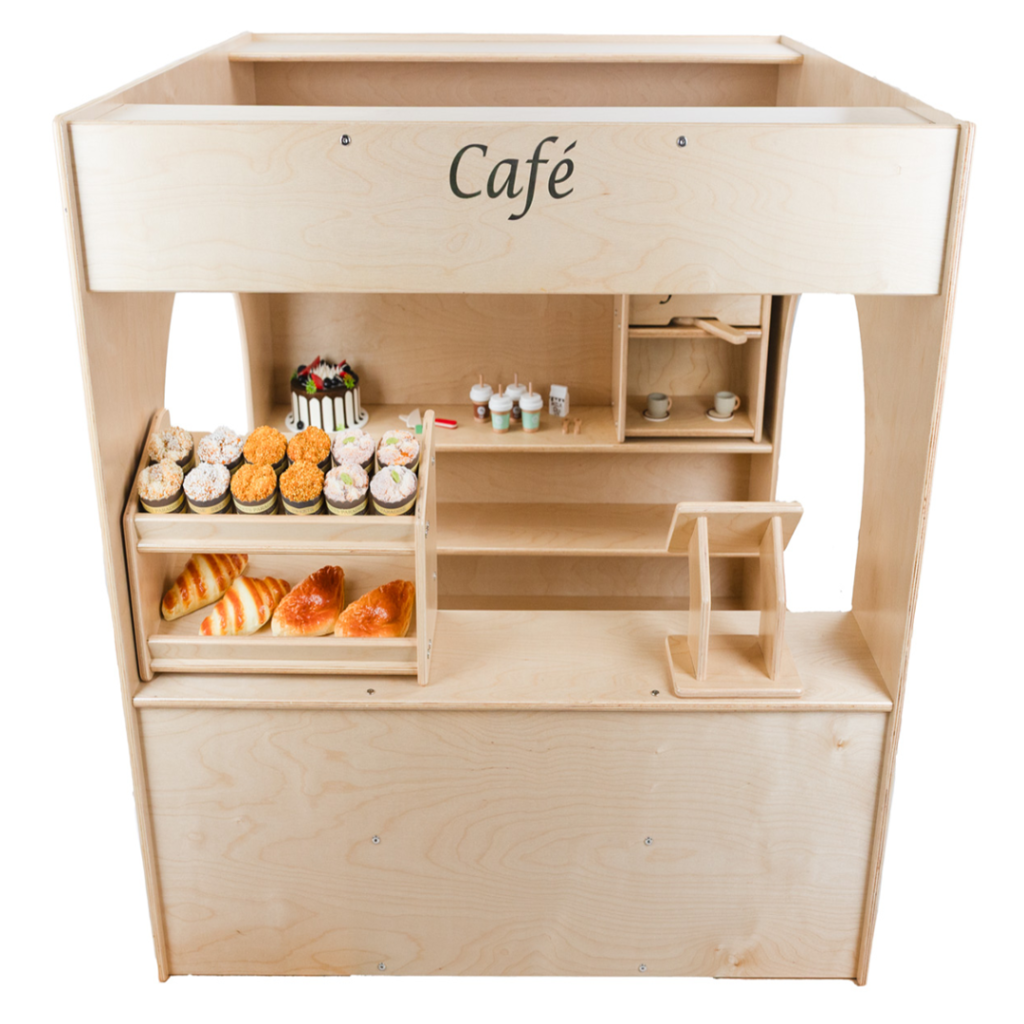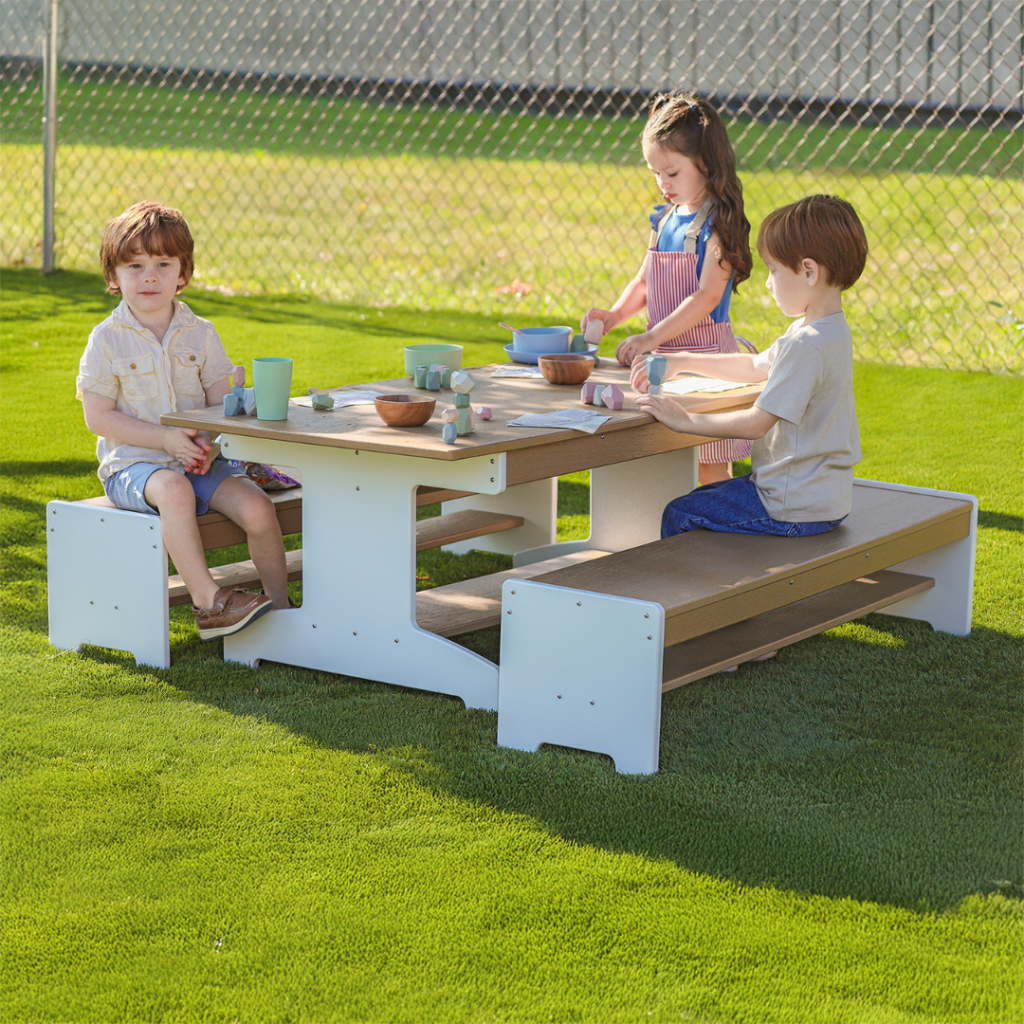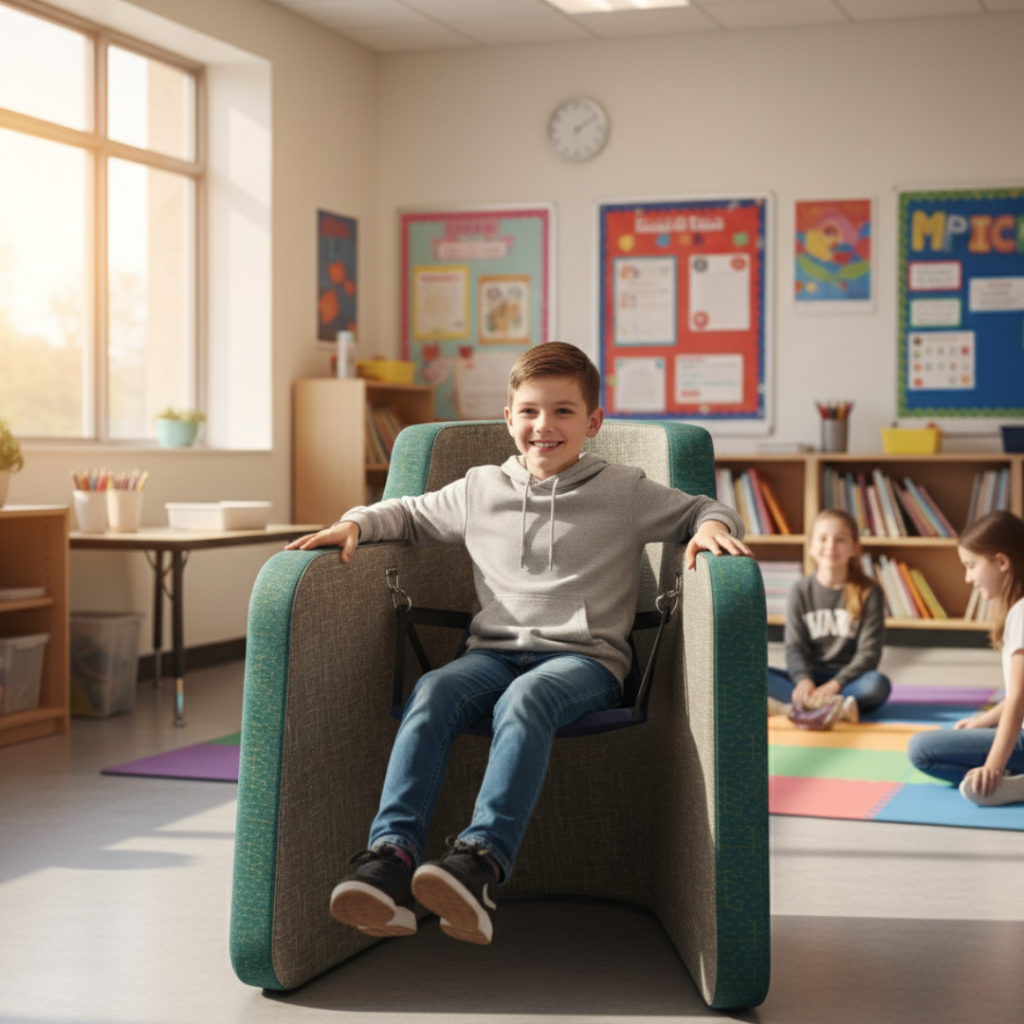“The best school environments don’t just support learning—they ignite imagination, nurture belonging, and empower every student to thrive.”






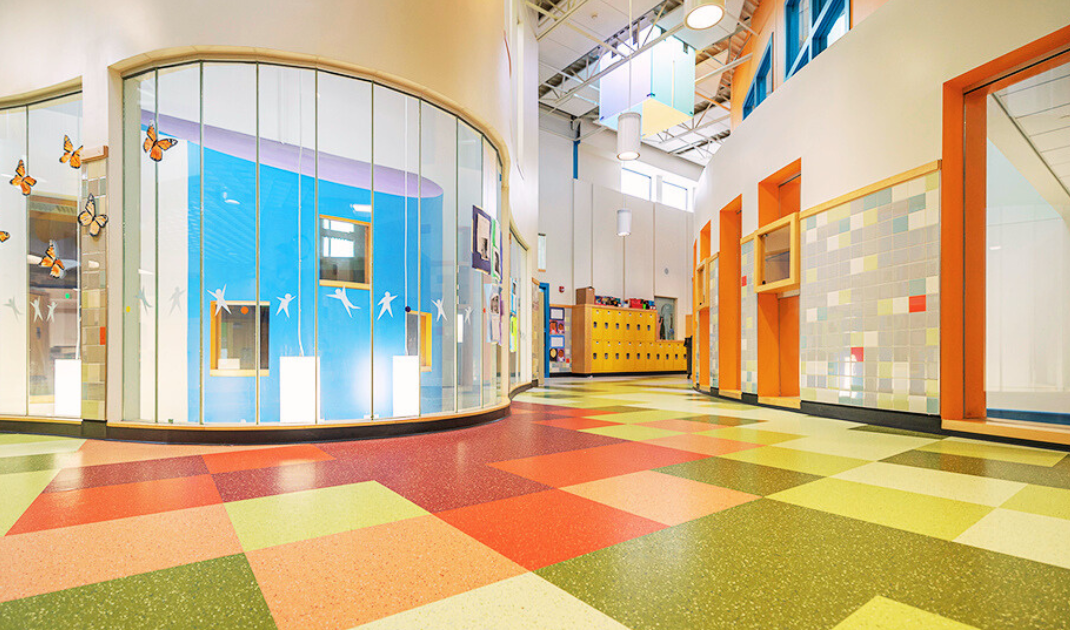


 Patent # 29/706534 (Roc)
Patent # 29/706534 (Roc)
RockerOtt.10™

Building Better Classrooms: A Sensory-Inclusive Checklist
Classrooms should be places where all students feel safe, respected, and ready to learn. But for many neurodivergent students—those with ADHD, autism, dyslexia, sensory processing disorders, and other neurological differences—traditional classroom environments can pose unnecessary challenges. Bright fluorescent lights, constant background noise, rigid seating arrangements, and visually cluttered walls can overwhelm the senses and interfere with a student’s ability to focus, regulate emotions, and fully participate in learning.
Neurodivergent students often bring unique ways of thinking, learning, and interacting with the world. They may excel in pattern recognition, creative problem-solving, or visual thinking—but they also tend to have heightened sensitivity to their physical environment. Sensory input, such as noise, lighting, textures, and movement, can significantly impact their comfort, attention, and well-being. Similarly, many benefit from clear routines, visual structure, and the freedom to move or self-regulate when needed.
